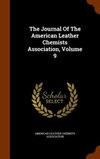山羊皮肤在细菌腐烂过程中的生化和物理变化
IF 0.5
4区 工程技术
Q4 CHEMISTRY, APPLIED
Journal of The American Leather Chemists Association
Pub Date : 2021-06-03
DOI:10.34314/jalca.v116i6.4310
引用次数: 0
摘要
生兽皮的质量决定了皮革的最终质量。由于盐的抑菌作用,在制作皮革之前,动物皮的保存过程主要使用盐作为一种流行的方法。皮革加工过程中盐的使用所造成的有害影响是众所周知的。这就要求开发一种经济、有效和环境友好的保存系统。本文研究了腐菌对动物皮肤理化特性随时间的影响。使用目视检查、扫描电镜分析和组织学染色技术研究了物理变化,其中结构恶化明显建立。通过观察不同时间间隔山羊皮中蛋白聚糖水平和胶原蛋白的降解,研究了生物化学方面的变化。此外,在剥皮后的36小时内,从皮肤中分离出负责各种皮肤成分降解的微生物。腐坏开始后6小时内出现胶原降解菌,36小时观察结束时蛋白分解菌和胶原分解菌数量增加,说明皮肤腐败严重,导致原料质量恶化。本文章由计算机程序翻译,如有差异,请以英文原文为准。
Biochemical and Physical Changes in Goatskin during Bacterial Putrefaction
The quality of the raw animal skin decides the final quality of leather. Preservation processes of raw animal skins until leather making predominantly uses salting as a popular method owing to the bacteriostatic effect provided by salt. The detrimental impact caused by the usage of salt from the leather processing is well established. This necessitates the quest for developing an economical, efficacious and environment-friendly preservation system. The present work investigates the effects on the physical and chemical characteristics of the animal skin caused by the putrefactive bacteria with respect to time. Physical changes were studied using visual examination, SEM analysis, and histological staining techniques where the structural deterioration was evidently established. Changes in biochemical aspects were studied by observing degradation in proteoglycan levels and collagen from the goat skin taken at various time intervals. Furthermore, the microorganisms that were responsible for the degradation of various skin components were isolated from the skin over the period of 36 hours from flaying. The occurrence of collagen-degrading organisms within 6 hours of initiation of putrefaction and increased number of proteolytic and collagenolytic bacteria at the end of 36-hours observation were indicative of tremendous skin spoilage leading to deteriorated quality of raw material.
求助全文
通过发布文献求助,成功后即可免费获取论文全文。
去求助
来源期刊

Journal of The American Leather Chemists Association
工程技术-材料科学:纺织
CiteScore
1.30
自引率
33.30%
发文量
29
审稿时长
3 months
期刊介绍:
The Journal of the American Leather Chemists Association publishes manuscripts on all aspects of leather science, engineering, technology, and economics, and will consider related subjects that address concerns of the industry. Examples: hide/skin quality or utilization, leather production methods/equipment, tanning materials/leather chemicals, new and improved leathers, collagen studies, leather by-products, impacts of changes in leather products industries, process efficiency, sustainability, regulatory, safety, environmental, tannery waste management and industry economics.
 求助内容:
求助内容: 应助结果提醒方式:
应助结果提醒方式:


